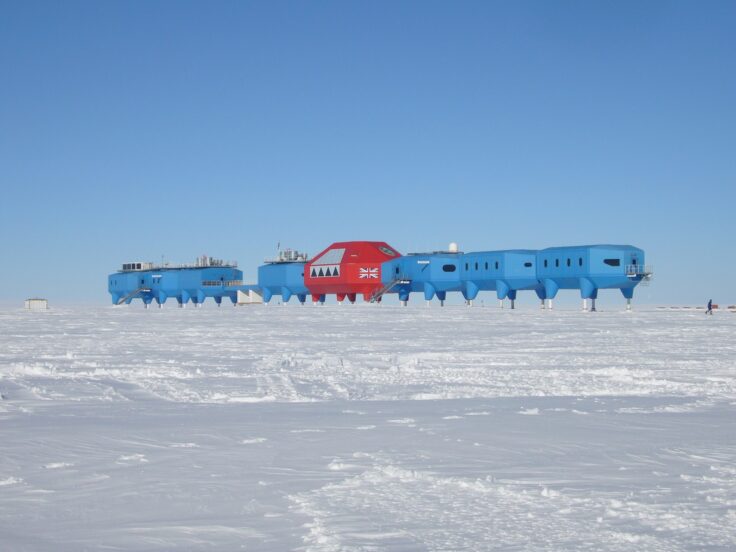ANTARCTIC BLOG: Working on the Polar Plateau
A new blog post from a team comprising polar atmosphere and ice chemist Holly Winton, analytical chemist Rebecca Tuckwell and atmospheric and glaciochemist Markus Frey who are working on the Polar plateau as part of the ISOL-ice research project. Read the team’s earlier post here
Halley Station 20/12/2016
In the early hours of the morning, we woke to a magnificent sight of the Brunt Ice Shelf. The RRS Ernest Shackleton moored up alongside the sea ice. A couple Adelie Penguins waddled up to greet us. Ship relief was under way immediately. Our science cargo came off first as priority and we were driven up to Halley Station in a Sno-cat. At Halley Station, Becky and Holly checked and ordered the science cargo at the Skiway for the flights to Kohnen Station and then waited for a suitable weather window for Markus to fly across from Rothera.

Kohnen Station 10/01/2017
Kohnen Station sits 2800 m above sea level and ~550 km inland from the Antarctic coast. The station is only operated in summer by the Alfred Wegener Institute (AWI) which allows ice core climatology, glaciology and atmospheric chemistry studies to be carried out in the high elevation, remote parts of Dronning Maud Land.
It took four Twin Otter aircraft flights to get the field party (Becky, Markus and Holly) and our 2.5 tons of science cargo to Kohnen Station. The flight from Halley to Kohnen station took 3 hours. We flew over the new Halley 6a station site, the “Halloween crack” in the Brunt Ice Shelf and the Heimefrontfjellea mountain range. Once arrived, it took a couple of days to acclimatise to the high elevation. We have been treated with outstanding German hospitality and cuisine, including Berliner (jam filled buns), Bretzel, Strudel, amazing selection of sweet treats (Hanuta, Ritter Sport, Haribo) and soups (Maultaschen, Eierfetzen), smoked salmon from Bremerhaven … Guten Appetit!
We have set up a suite of atmospheric instruments at the “flux site” in the clean air sector which is approx. 350 m from the main station. The atmospheric instruments are monitoring nitrogen oxides, ozone, turbulent flux and down welling irradiance and will run for the whole duration of the campaign. We have also been taking daily aerosol and surface snow samples.
Over the past few days we have put up the Weatherhaven ice core drilling tent at 1km from the main station, assembled the drill and drilled already 43 m of ice core. Kohnen Station mountaineers and carpenters, Stefan and Christian, were amazing help erecting the Weatherhaven tent with additional manpower from Kohnen to anchor the drill mast. Our aim is to drill 120 m of ice which will provide an atmospheric archive of the last 1000 years. This period will go way beyond the instrumental record of stratospheric ozone and allow us to improve our understanding of the natural causes of stratospheric ozone variations during the pre-industrial.